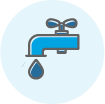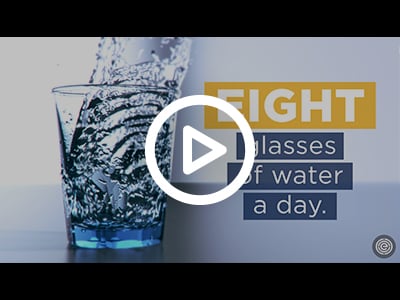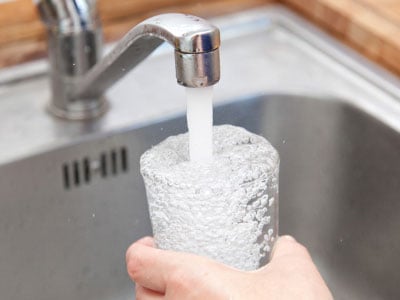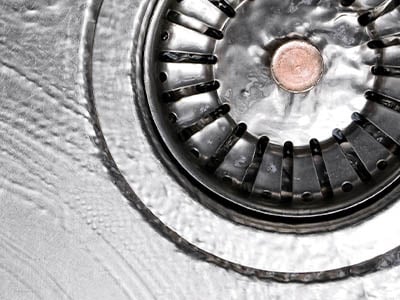
EWG's drinking water quality report shows results of tests conducted by the water utility and provided to the Environmental Working Group by the Georgia Department of Natural Resources, as well as information from the U.S. EPA Enforcement and Compliance History database (ECHO). For the latest quarter assessed by the U.S. EPA (January 2021 - March 2021), tap water provided by this water utility was in compliance with federal health-based drinking water standards.
10 Total Contaminants
Bromodichloromethane, one of the total trihalomethanes (TTHMs), is formed when chlorine or other disinfectants are used to treat drinking water. Bromodichloromethane and other disinfection byproducts increase the risk of cancer and may cause problems during pregnancy. Click here to read more about disinfection byproducts.
EWG Health Guideline
0.06 ppb or less NO LEGAL LIMITThe state and national averages were calculated using the averages of the contaminant measurements for each utility in 2017-2019.
ppb = parts per billion
The EWG Health Guideline of 0.06 ppb for bromodichloromethane was proposed in 2018 by the California Office of Environmental Health Hazard Assessment as a one-in-a-million lifetime risk of cancer. Values greater than one-in-a-million cancer risk level can result in increased cancer cases above one in a million people.
VIEW MORE TESTING DATA
![]()
![]()
Chloroform, one of the total trihalomethanes (TTHMs), is formed when chlorine or other disinfectants are used to treat drinking water. Chloroform and other disinfection byproducts increase the risk of cancer and may cause problems during pregnancy.
EWG Health Guideline
0.4 ppb or less NO LEGAL LIMITThe state and national averages were calculated using the averages of the contaminant measurements for each utility in 2017-2019.
ppb = parts per billion
The EWG Health Guideline of 0.4 ppb for chloroform was proposed in 2018 by the California Office of Environmental Health Hazard Assessment as a one-in-a-million lifetime risk of cancer. Values greater than one-in-a-million cancer risk level can result in increased cancer cases above one in a million people.
VIEW MORE TESTING DATA
![]()
![]()
Dichloroacetic acid, one of the group of five haloacetic acids regulated by federal standards, is formed when chlorine or other disinfectants are used to treat drinking water. Haloacetic acids and other disinfection byproducts increase the risk of cancer and may cause problems during pregnancy. Click here to read more about disinfection byproducts.
EWG Health Guideline
0.2 ppb or less NO LEGAL LIMITThe state and national averages were calculated using the averages of the contaminant measurements for each utility in 2017-2019.
ppb = parts per billion
The EWG Health Guideline of 0.2 ppb for dichloroacetic acid was proposed in 2020 by the California Office of Environmental Health Hazard Assessment as a public health goal, the level of a drinking water contaminant that does not pose a significant health risk.a one-in-a-million lifetime risk of cancer. Values greater than one-in-a-million cancer risk level can result in increased cancer cases above one in a million people.
VIEW MORE TESTING DATA
![]()
![]()
Haloacetic acids are formed when disinfectants such as chlorine are added to tap water. The group of five haloacetic acids regulated by federal standards includes monochloroacetic acid, dichloroacetic acid, trichloroacetic acid, monobromoacetic acid and dibromoacetic acid.
EWG Health Guideline
0.1 ppb or lessThe state and national averages were calculated using the averages of the contaminant measurements for each utility in 2017-2019.
ppb = parts per billion
The EWG Health Guideline of 0.1 ppb for the group of five haloacetic acids, or HAA5, was defined in a peer-reviewed scientific study by EWG and represents a one-in-a-million lifetime cancer risk level. This health guideline protects against cancer.
VIEW MORE TESTING DATA
![]()
![]()
Nitrate and nitrite enter water from fertilizer runoff, septic tanks and urban runoff. These contaminants can cause oxygen deprivation for infants and increase the risk of cancer. Nitrite is significantly more toxic than nitrate. Click here to read more about nitrate.
EWG Health Guideline
0.14 ppm or lessThe state and national averages were calculated using the averages of the contaminant measurements for each utility in 2017-2019.
ppm = parts per million
The health guideline of 0.14 parts per million, or ppm, for nitrate and nitrite is based on the equivalent health guideline for nitrate, as defined in a peer-reviewed scientific study by EWG. This guideline represents a one-in-one-million annual cancer risk level.
VIEW MORE TESTING DATA

 naturally occuring icon" />
naturally occuring icon" />
![]()
![]()
Trihalomethanes are cancer-causing contaminants that form during water treatment with chlorine and other disinfectants. The total trihalomethanes group includes four chemicals: chloroform, bromodichloromethane, dibromochloromethane and bromoform.
EWG Health Guideline
0.15 ppb or lessThe state and national averages were calculated using the averages of the contaminant measurements for each utility in 2017-2019.
ppb = parts per billion
The health guideline of 0.15 parts per billion, or ppb, for the group of four trihalomethanes, or THM4/TTHM, was defined in a peer-reviewed scientific study by EWG and represents a one-in-one-million lifetime cancer risk level.
VIEW MORE TESTING DATA
![]()
![]()
Trichloroacetic acid, one of the group of five haloacetic acids regulated by federal standards, is formed when chlorine or other disinfectants are used to treat drinking water. Haloacetic acids and other disinfection byproducts increase the risk of cancer and may cause problems during pregnancy. Click here to read more about disinfection byproducts.
EWG Health Guideline
0.1 ppb or less NO LEGAL LIMITThe state and national averages were calculated using the averages of the contaminant measurements for each utility in 2017-2019.
ppb = parts per billion
The EWG Health Guideline of 0.1 ppb for trichloroacetic acid was proposed in 2020 by the California Office of Environmental Health Hazard Assessment as a public health goal, the level of a drinking water contaminant that does not pose a significant health risk.a one-in-a-million lifetime risk of cancer. Values greater than one-in-a-million cancer risk level can result in increased cancer cases above one in a million people.
VIEW MORE TESTING DATA
![]()
![]()
Includes chemicals detected in 2017-2019 for which annual utility averages exceeded an EWG-selected health guideline established by a federal or state public health authority.
† HAA5 is a contaminant group that includes monochloroacetic acid, dichloroacetic acid, trichloroacetic acid, monobromoacetic acid and dibromoacetic acid. HAA9 is a contaminant group that includes the chemicals in HAA5 and bromochloroacetic acid, bromodichloroacetic acid, chlorodibromoacetic acid and tribromoacetic acid. TTHM is a contaminant group that includes bromodichloromethane, bromoform, chloroform and dibromochloromethane.
Dibromochloromethane, one of the total trihalomethanes (TTHMs), is formed when chlorine or other disinfectants are used to treat drinking water. Dibromochloromethane and other disinfection byproducts increase the risk of cancer and may cause problems during pregnancy. Click here to read more about disinfection byproducts.
EWG Health Guideline
0.1 ppb or less NO LEGAL LIMITThe state and national averages were calculated using the averages of the contaminant measurements for each utility in 2017-2019.
ppb = parts per billion
The EWG Health Guideline of 0.1 ppb for dibromochloromethane was proposed in 2018 by the California Office of Environmental Health Hazard Assessment as a one-in-a-million lifetime risk of cancer. Values greater than one-in-a-million cancer risk level can result in increased cancer cases above one in a million people.
VIEW MORE TESTING DATA
![]()
![]()
Fluoride occurs naturally in surface and groundwater and is also added to drinking water by many water systems.
The state and national averages were calculated using the averages of the contaminant measurements for each utility in 2017-2019.
ppm = parts per million

![]()
Monochloroacetic acid, one of the group of five haloacetic acids regulated by federal standards, is formed when chlorine or other disinfectants are used to treat drinking water. Haloacetic acids and other disinfection byproducts increase the risk of cancer and may cause problems during pregnancy. Click here to read more about disinfection byproducts.
EWG Health Guideline
53 ppb or less NO LEGAL LIMITThe state and national averages were calculated using the averages of the contaminant measurements for each utility in 2017-2019.
ppb = parts per billion
The EWG Health Guideline of 53 ppb for monochloroacetic acid was proposed in 2020 by the California Office of Environmental Health Hazard Assessment as a public health goal, the level of a drinking water contaminant that does not pose a significant health risk.. This health guideline protects against system toxicity.
VIEW MORE TESTING DATA
![]()
![]()
Chemicals tested for but not detected from 2014 to 2019:
Information in this section on Atlanta-Fulton County Water Resources Commission comes from the U.S. EPA Enforcement and Compliance History Online database (ECHO).
| Contaminant | Activated Carbon | Reverse Osmosis | Ion Exchange |
| CONTAMINANTS ABOVE HEALTH GUIDELINES | |||
| Bromodichloromethane | ✔ | ✔ | |
| Chloroform | ✔ | ✔ | |
| Dichloroacetic acid | ✔ | ✔ | |
| Haloacetic acids (HAA5) | ✔ | ✔ | |
| Nitrate & nitrite | ✔ | ✔ | |
| Total trihalomethanes (TTHMs) | ✔ | ✔ | |
| Trichloroacetic acid | ✔ | ✔ | |
| OTHER CONTAMINANTS DETECTED | |||
| Dibromochloromethane | ✔ | ✔ | |
| Fluoride | ✔ | ||
| Monochloroacetic acid | ✔ | ✔ | |
One of the best ways to push for cleaner water is to hold accountable the elected officials who have a say in water quality – from city hall and the state legislature to Congress all the way to the Oval Office – by asking questions and demanding answers.
Check out our recommendations for filters to protect your water against the detected contaminants.




EWG’s Tap Water Database is provided solely for your personal, non-commercial use. You may not copy, reproduce, republish or distribute information from EWG’s Tap Water Database without EWG’s prior written permission. For information about licensing EWG data and analyses, contact permissionrequests[at]ewg.org.
Environmental Working Group is a 501(c)(3) nonprofit corporation, EIN 52-2148600.
Copyright © 2024. Environmental Working Group. All Rights Reserved.
Contact Us | Privacy Policy | Legal Disclaimer | Reprint Permission Information
Connect with EWG